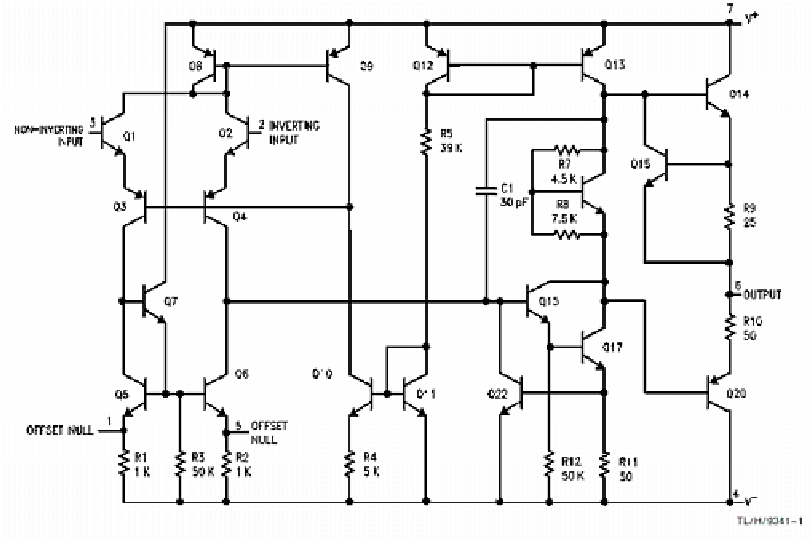 |
Operational amplifiers, or opamps for short, are common electronic device modules. They can easily be used to create a variety of useful electronic circuits, and save designers time by reducing the need to design transistor amplifiers.
The 741 is a standard opamp module, available in an integrated circuit package. The detailed circuit diagram (no, you don't need to understand it in detail, at least not in this course) is shown in Figure 6.
The pinout, defining the external connections, is shown in Table 1.
We won't be using the OFFSET features.
A block diagram of the opamp, showing inputs, outputs, and power supply connections, is shown in Figure 7.
The opamp amplifies the difference input
vin=v+-v-, so that
Power is supplied to the opamp via Vcc+ and Vcc-. For example, Vcc+=+15V, Vcc-=-15V, where all voltages are measured relative to a common ground reference point. When v+=v-, we will have vout=0V. If we use Vcc+=10V, Vcc-=0V, then v+=v- will give vout=5V, the voltage midway between. The power supply connections are often omitted in opamp circuit diagrams, and their presence is implicitly understood.
To summarise, an opamp simply amplifies the difference between its inputs.
ANU Engineering - ENGN2211